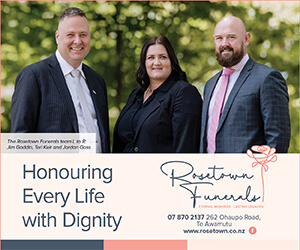More stories about the men listed on the Te Awamutu Cenotaph were unveiled last week at a meeting of genealogists at the Te Awamutu Library.
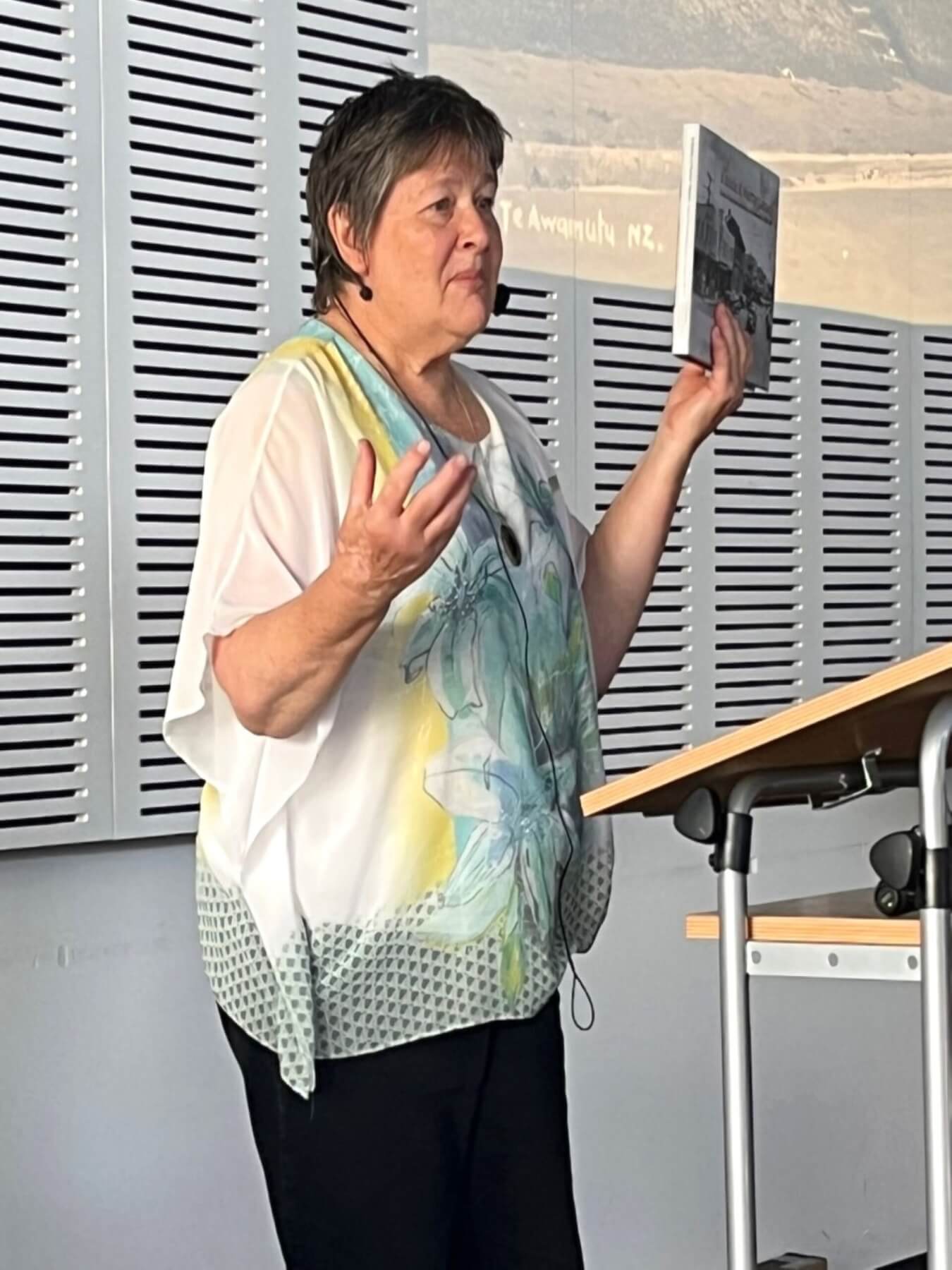
Sandra Metcalfe, seen here with a copy of the book she and Alan Hall published last year – ‘A Bricks & Mortar Legacy: Stories of Commercial Buildings in Te Awamutu 1890-1957.” The book contains some references related to names on the cenotaph. Photo: Viv Posselt
The presentation was another in an ongoing series highlighting findings by researchers on the lives of the 58 fallen World War One soldiers whose names are on the cenotaph at Te Awamutu’s Anzac Green.
The gathering was hosted by NZ Society of Genealogists Te Awamutu branch members Sandra Metcalfe and Linda Howarth. They and other members presented findings on 11 soldiers who had at some point in their lives been linked to the Te Awamutu area.
Included in Friday’s presentation were Alfred Bluck, Peter Sheffield, Cyril Daking, Francis Hatwell, Earnest Harris, William Dunwoodie, Frederick Barry, Evan Innes-Jones, Arthur White, Thomas Deeney and Frederick ‘Clarence’ Vile.
Metcalfe said not all were from Te Awamutu, but most had links to the area at some stage.
She said there will also be a talk at the Kihikihi Anzac Day service focusing on three of the soldiers named on the Kihikihi cenotaph.
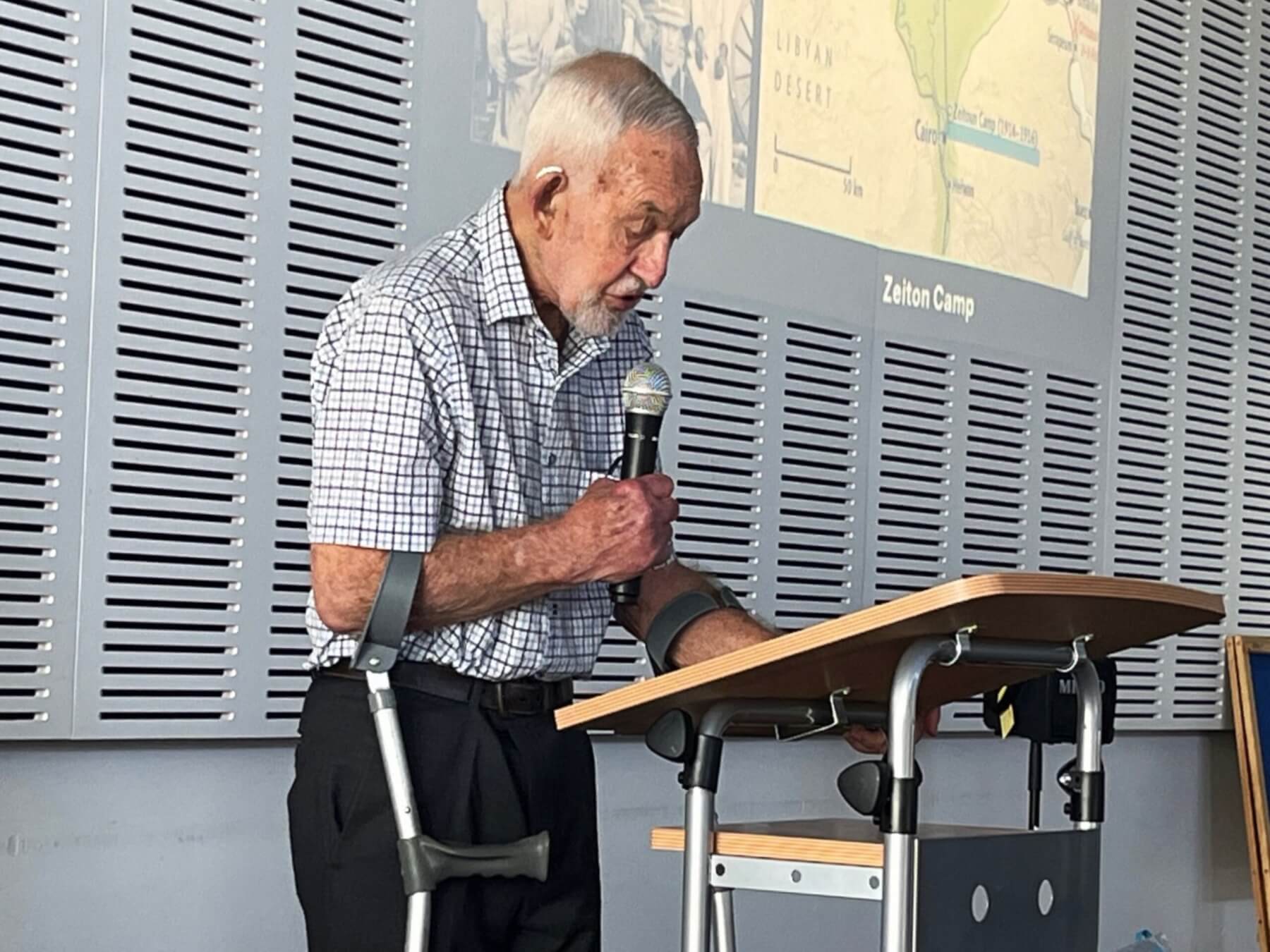
Genealogist Alan Hall spoke about soldiers Alfred Bluck and Peter Sheffield. Photo: Viv Posselt
“We’re living in uncertain times … we can all see how tenuous things are between war and peace. Sometimes we forget all the years of peace we have had since World War Two,” she told the gathering. “One of the reasons we do this is because it is important to tell the stories of those who have served, or given up their lives, for peace and for the life we enjoy today.”
One of the stories relates to Francis Hatwell, who died at the Somme in April 1918, aged just 24. He had married in 1915, and his widow Annette died in the Spanish influenza epidemic in late 1918. Their story was told by The News last year by Te Awamutu man Len Hatwell, who was Frances’ nephew.
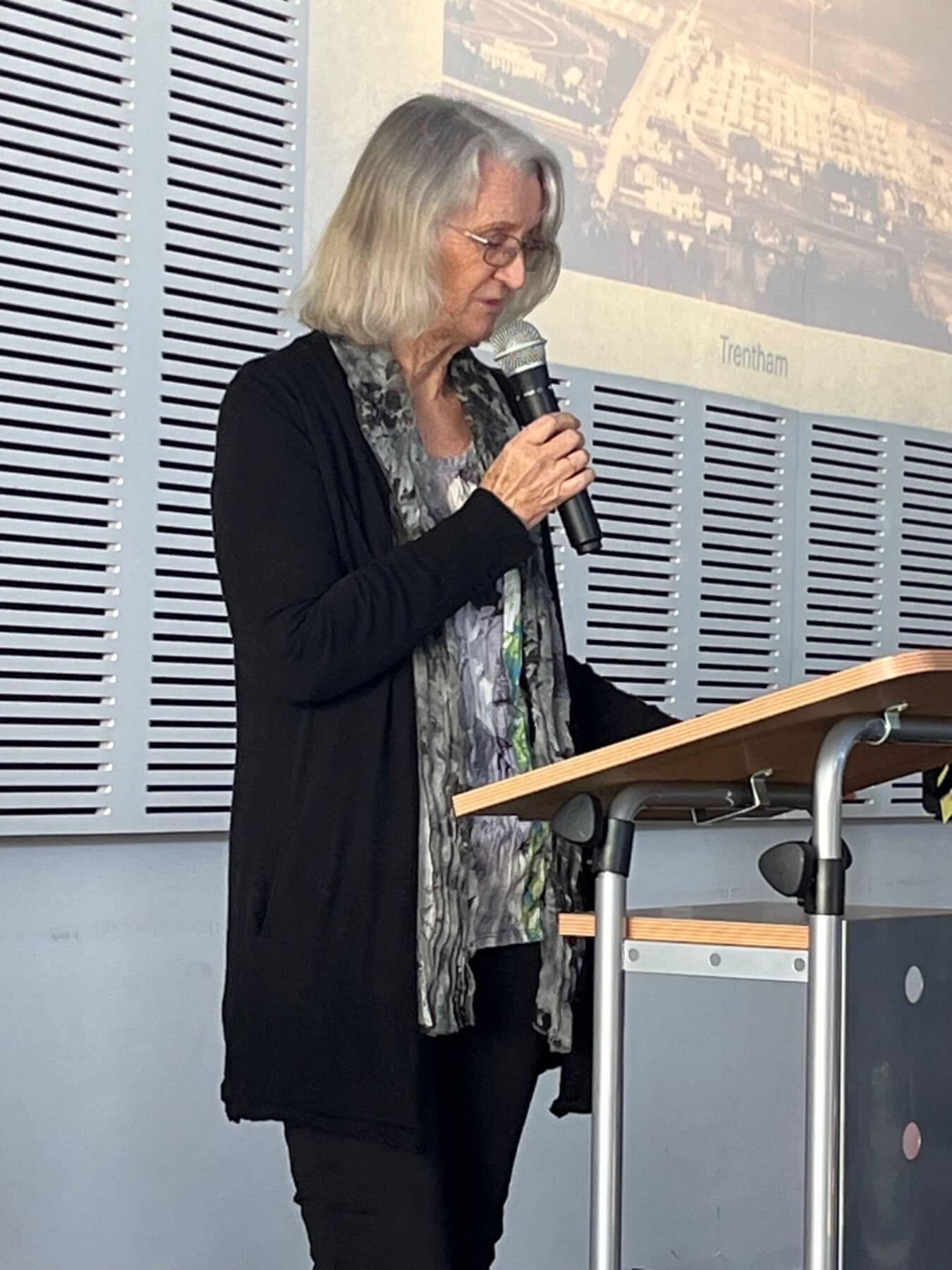
Genealogist Linda Howarth presented research on Evan Innes-Jones. Photo: Viv Posselt
Another story told of English-born Cyril Daking, who together with his partners opened House, Daking & Sindel’s in the Teasdale building in 1912, a draper’s business. Daking died of wounds sustained at the Somme on July 3, 1916, aged 30.
William Dunwoodie, also born in the UK, migrated aged 10 to New Zealand. He and his eight-year-old companion John Baske were met at Auckland station in 1906 and taken to Dilworth School. Dunwoodie enlisted just before his 21st birthday and died of wounds sustained in Belgium on June 23, 1917.
Yet another, Frederick ‘Clarence’ Vile, died at the Somme on July 27, 1916. Born in Pahiatua, he was the grandson of the late Mr J Vile, who represented the Manawatu electorate in Parliament.
Also presenting their research findings were society members Alan Hall, Avis Steed, Anne Roberts, Rae Selby and Sharene Viles.
The society gave a presentation on 18 of the 58 soldiers in 2024, and Metcalfe said the project would continue next year with research on the remainder. She said plans were to have display posters on each available for public viewing.
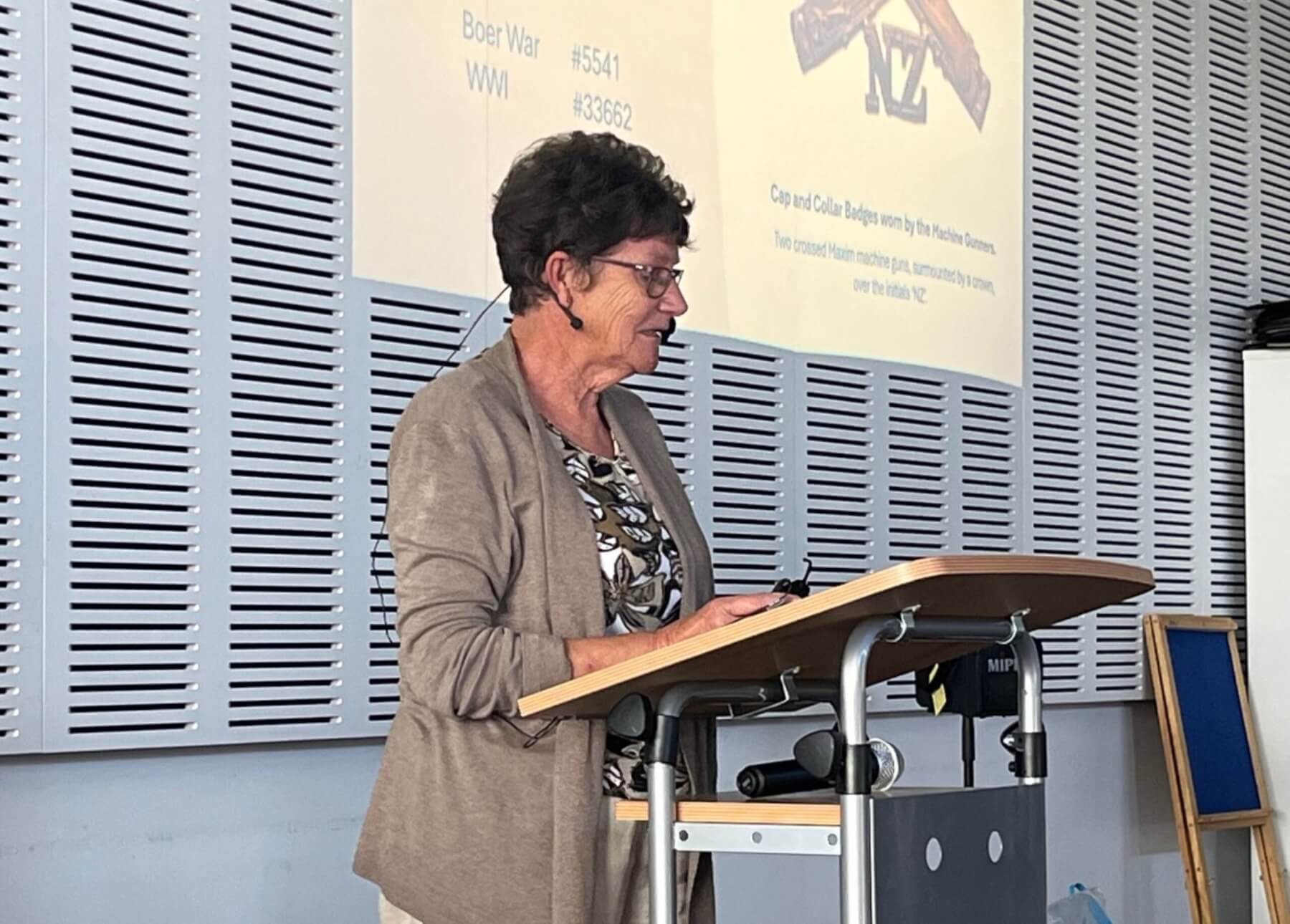
Rae Selby speaking about her research on Arthur White. Photo: Viv Posselt
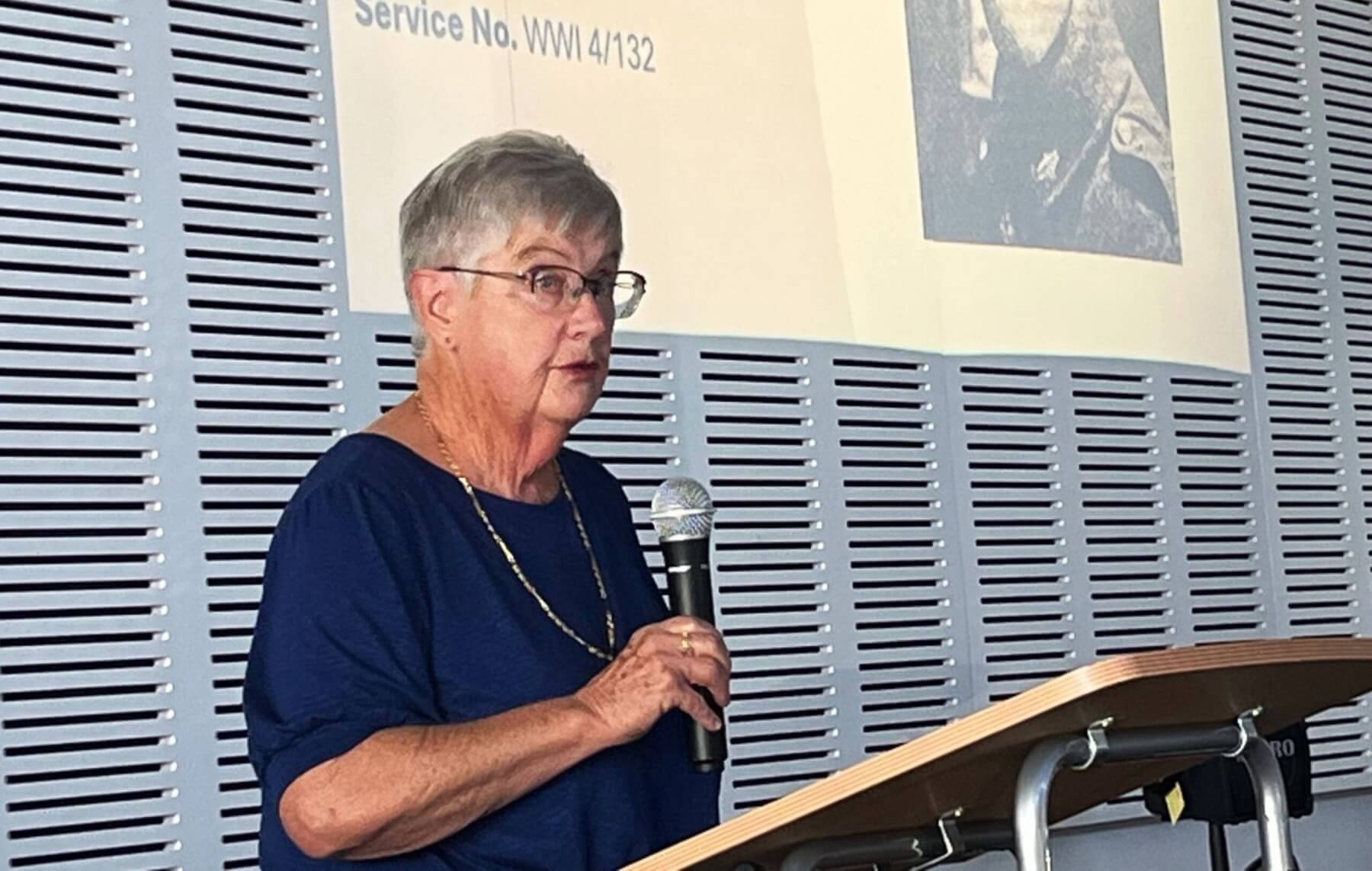
The story of Francis Hatwell, who lived in Te Awamutu before going to war, was told by Avis Steed. Photo: Viv Posselt




